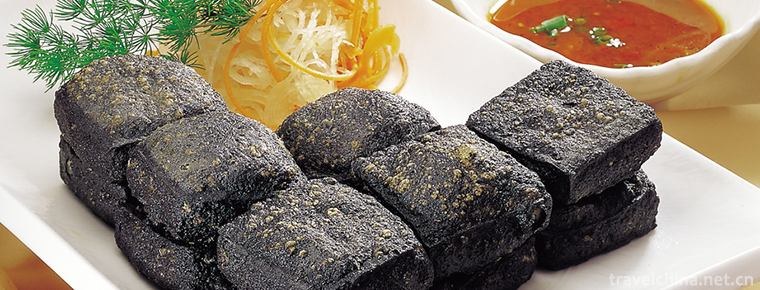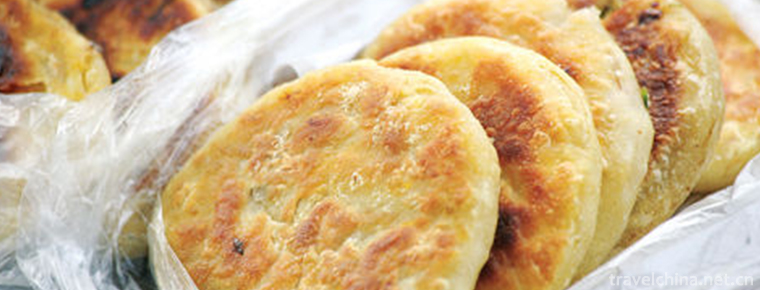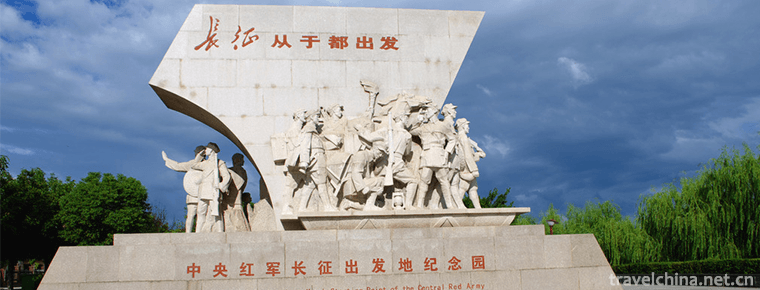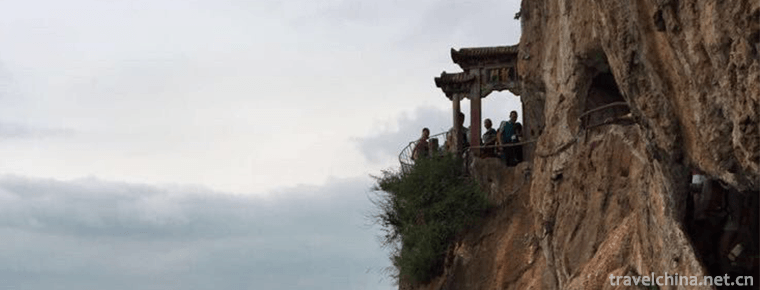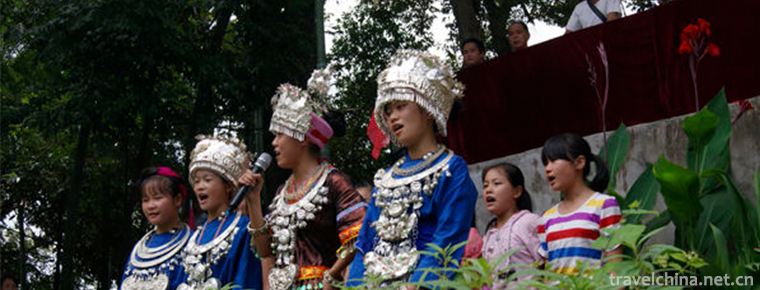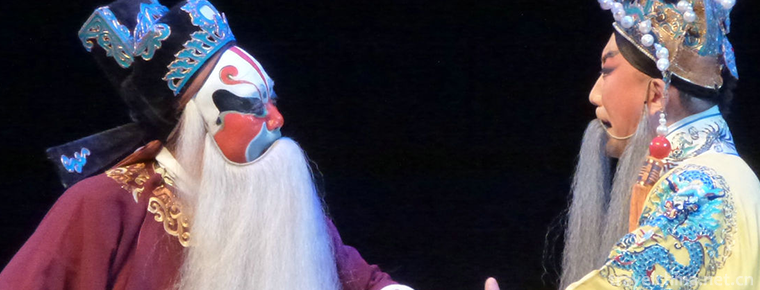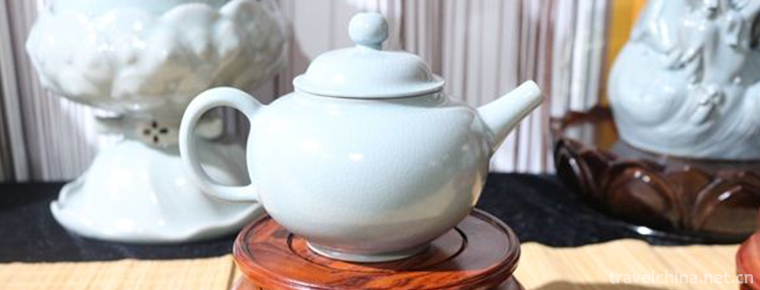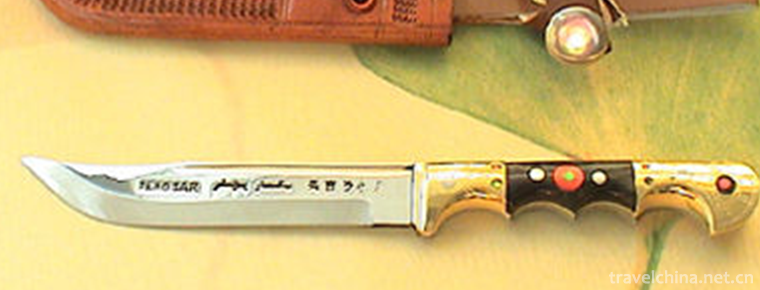Encouragement of Miao Nationality in Western Hunan
Encouragement of Miao Nationality in Western Hunan
Encouraged by the Miao people in Western Hunan Province, the traditional dance of Tujia and Miao Autonomous Prefecture in Western Hunan Province is one of the national intangible cultural heritage.
The Miao inspiration in Western Hunan is a unique dance art in the Miao area of our country. It is spread in Jishou City, Fenghuang, Luxi, Baojing, Huayuan, Guzhang and other counties in the Tujia and Miao Autonomous Prefecture of Western Hunan Province. According to historical documents, the dance originated before the Han Dynasty and was produced in Miao sacrificial activities. Encouragement is a popular folk art form used by the Miao people in Western Hunan. It conducts production work with drum music, disseminates national culture with drum music, and entertains the body and mind with drum music. It organically combines music, dance, performance and other arts. It has a long history, rich content and distinctive features. With the change of the times, Miao inspiration has become one of the dance art forms loved by the Miao people.
On May 20, 2006, the Miao people in Western Hunan were encouraged to be listed in the first batch of national intangible cultural heritage list approved by the State Council of the People's Republic of China. The heritage number is III-30.
historical origin
The emergence, development and evolution of the inspiration of the Miao people in Western Hunan are closely related to the geographical environment and human ecological environment of the local Miao people.
Since the pre-Qin period, the Miao people have experienced seven major migrations. In the process of migration, drum, as an important tool of communication, entered the social life of Miao people. The lyrics of "knocking on the stone is not far away, knocking on the wood, knocking on the wood", you knocking on the wood, I knocking on the wood to respond to the sound"and"knocking on the stone first, then beating the drum"in the Miao Children's Song reflect the fact that Miao people in migration once connected with each other by beating on the sounder and the bronze drum.
During the Tang and Song Dynasties, when the Miao people moved to Wuxi area of Wuling to settle down, the time for Miao people to carry out inspiration activities increased, the volume of drums increased because of no longer migrating, the culture of bronze drums reached its peak, and bronze drums became more and more common in ancient books. Tang Liu-ming wrote in Ling Biao Lu Biao: "There are bronze drums in barbarian music." The biography of Nanman in the New Tang Dynasty reads: "There is Dong Xie Man... Those who appreciate meritorious deeds are cows and horses and bronze drums." One of the materials in Zhufu's Ximan Congxiao in Song Dynasty shows the rich and colorful inspiration projects of the Miao nationality in Western Hunan in Song Dynasty: "Drum festivals are different, there are dark arrow drums, gathering people drums and setting up drums. Guests also take this as far as they are concerned. Wine rest, few business participants, then the voice changes, eventually no other, celebrities drum. The Miao people in Western Hunan can also see their distant marks in sitting drums, inviting drums, welcoming drums and visiting drums.
During the Ming and Qing Dynasties, bronze drums were still popular in the hinterland of Yunnan-Guizhou Plateau, but under the influence of Han culture, wooden drums with simple appearance and low cost were prevalent in Western Hunan. Yan Ruyu of the Qing Dynasty, in his book "An Examination of Miao Preparedness and Customs", has a record of "cutting a long wood into the sky and pretending to be drum". The emergence of wooden drums has greatly promoted the development and popularization of inspiration. During the Ming and Qing Dynasties, the activities of sacrificing ghosts to vertebral cattle flourished, and inspiration became an important part of this activity. Volume 10 of Guzhangping Hall Records contains the custom of offering sacrifices to ghosts by vertebral cattle if the door is not in order. Yan Ruyu of the Qing Dynasty made a detailed description of the scene of sacrificing ghosts to the vertebral bulls of the Miao nationality in Western Hunan: "Let the beautiful women jump and beat them, choose the good singers of men and women, all dressed in colorful clothes, or wear red felt, wear folded kerchiefs, cut five-color paper hanging on their back, men and women right-handed around and sing, alternating and singing, raising their hands and feet, Ji Xuying Festival, the name is"Jump". Drum hiding'.
In the 1930s, Ling Chunsheng, a scholar of ethnology, recorded in detail the inspiration of the Miao people in Western Hunan. According to the "Investigation Report of Miao Nationality in Western Hunan", there are two kinds of encouragement: beating dance and boxing dance. The former includes 22 kinds of comb dance, flower arrangement dance, sword back dance, monkey dance, and the latter includes 8 kinds of fireworks dance and so on. The book also records in detail the dancing methods of each dance.
In 1940, Shi Qigui's "On-the-spot Investigation Report of Miao Nationality in Western Hunan" classified the Miao inspiration into two categories: celebrating the New Year and celebrating the gods, emphasizing their different functions: "The custom of celebrating the New Year is called the New Year Drum, which starts at the beginning of the first month of the first month of the summer calendar and ends at the end of the second half of the month. In the autumn and winter, the vertebra pig was held ceremoniously, and the guests went to play. But Nian Gu is a public game, and Shen Gu is used for sacrificial celebration. The two books show us the modern form of inspiration of the Miao people in Western Hunan.
Beginning in the early 1980s, Encouragement began to enter local song and dance troupes and colleges (such as Beijing Song and Dance Troupe, Guangzhou Song and Dance Troupe, Guangzhou Military Region Army Arts and Works Troupe, Shenyang Dance Academy, Jishou University Music Department, etc.).
Since the late 1980s, inspiration for Sacrificial Rites has appeared frequently in various commercial activities. Encouraging gradually separated from sacrifice and stepped onto the public stage, becoming a entertaining project. Encouraging is also linked to tourism, and has its own image in scenic spots, holidays and various major activities.
Dance features
Dance type
Miao inspiration can be divided into many types according to its different functions and manifestations.
According to gender, Miao encouragement can be divided into male encouragement, female encouragement and male-female drum. Among them, men are vigorous and bold in inspiring posture; women are light in inspiring steps and charming in action; men and women are enjoying a grand and lively drum scene.
According to the number of people, it can be divided into single encouragement, double encouragement, four encouragement and reunion encouragement. The performance style of two-person inspiration and four-person inspiration is rough and powerful, charming and beautiful; the performance style of reunion inspiration is singing while dancing, soft and slow lyric, etc.
According to the function, Miao encouragement can be divided into two kinds: celebrating the New Year and celebrating the God. With the change of Miao people's aesthetic taste and inspiration art inheritance. The expression of the Miao people's encouragement has changed accordingly. Encouragement is not only used for sacrifice, but also for people's daily life. Generally, in the major activities of April 8th, around the Spring Festival, driving autumn, vertebral cattle, harvest celebration, marriage, greeting guests and so on, they all take inspiration as a special way to express their feelings.
According to the production materials and performance methods, it can be divided into wooden drum, bronze drum, stepping drum and so on. One is wooden drum, which is made up of frame, skin, hammer and other parts. Two cowhides cover the drum. When beating the drum, they either hit the edge or hit the drum face. The most prominent manifestation of wooden drum dance is playing drums and beating edges. This is also the unique performance of Miao drum dance, which can not be found in other nationalities. The second is the bronze drum. The bronze drum is a musical instrument made of bronze. It was originally used in the sacrificial activities of the Miao nationality. It gradually evolved into an entertaining musical instrument in the Ming and Qing Dynasties. The shape and size of the drum are different, and the back is hollow. When beating the drum, the drum is beaten back and forth with a wooden stick. Thirdly, stepping on drum is a kind of recreational encouragement, which is mainly popular in the Miao area of Qingshui River Basin in Guizhou Province. Stepping on drums is a kind of leather drum. The drum body is not big. It can only be beaten by one or two people. The rest of the people jump around stepping on drums and dance according to the drums.
According to the form, there are dozens of kinds of encouragement of Miao nationality, such as flower encouragement, monkey encouragement and reunion encouragement. The characteristics of these dances are very distinct, the performers are inspired, the rhythm is bright, the hands alternately beat drums, the feet alternately jump, the whole body is constantly twisting, the movement stretches generously.
Dancing pace
There are four basic steps of inspiration:
Three steps: that is, the left and right feet in front of the cross replacement, with the performance of production labor movements, such as transplanting rice, picking grain, and so on;
Front kick step and side jump kick step: This step is a woman's inspiration action, its action range is small, soft and graceful. This step originated from the ancient women's shank kicking because they did not have a mirror and developed by borrowing water.
Roll-over method: when playing drums, the body rolls over, in different directions, rotating drums, flexible and flexible, changing many ends, used to perform actions such as climbing, descending and crossing depressions;
Three steps on the triangle: this kind of step is mainly used to perform martial arts movements; when performing, the eye sweeps both sides, blocking the knife and gun, preventing unloading attacks, acting clean, powerful, changeable, the highest level of play out of 3/8 rhythm, which is still used for physical exercise.
Dance Costume
Encouraged men and women wear Festival dresses, men wear full-skirted jackets, collarless, chest and bottom lace, under a long dress (Ba skirt) or large pants, feet wear men's bow shoes, summer wear more hemp straw shoes, head wear Velvet Large Black headdress or flowery, ear bowl size silver earrings, neck with one to three silver. Necklace, silver bracelet. Women are more solemn. They wear silver caps or overlapping large black handkerchiefs or flower handkerchiefs, earrings with bibcocks and melon seeds, three to eight silver necklaces and two to four silver bracelets. Chest hanging silver chain, silver flower, silver toothpick, silver bell, silver butterfly, silver medal, silver shawl and other decorations, wearing mosaic shoulder jacket, under a pleated skirt or mosaic pants, waist embroidery waist, feet wearing women's embroidered shoes. Men's and women's clothes are colourful and dazzling. An inspiration performance is a unique Miao costume exhibition and a delicate Miao cultural feast.
Current situation of inheritance
Inheritance value
Miao people's ethnic beliefs and living environment have changed alternately, which makes the social status of Miao people's encouragement higher in national labor and development.
The inspiration of the Miao nationality is integrated with some biographical contents of national heroes who resist aggression, National Uprising and heroic war of resistance. Therefore, the inspiration of the Miao nationality plays a role in spreading national history, inheriting national culture and promoting national spirit among the people.
Heritage figures
Shi Shunmin, female, Miao nationality, born in 1949, from Xiangxi, Hunan Province. The second batch of state-level intangible cultural heritage projects of the Miao people in Western Hunan inspire the representative inheritors, and the Tujia and Miao Autonomous Prefecture in Western Hunan Province declares.
Hong Fuqiang, male, Miao nationality, born in 1936, from Xiangxi, Hunan Province. The second batch of state-level intangible cultural heritage projects of the Miao people in Western Hunan inspire the representative inheritors, and the Tujia and Miao Autonomous Prefecture in Western Hunan Province declares.
protective measures
The former Central South Institute for Nationalities hired Wang Longyingtang, the first generation of female drum drum of Miao nationality (after the founding of New China), as a visiting professor, specializing in the teaching of Miao inspiration.
In 1994, Shanjiang Township of Fenghuang County and Longbizui Township of Guzhang County were awarded the title of "Miao Flower and Drum Township" by Hunan Provincial Department of Culture.
In 2003, Wang Huanchi, the stationmaster of Merong Town Style Station, formed an inspiration team.
On May 2, 2015, the Miao Drum Training Institute was established in Pinglang Village, Zhaiyang Township, Jishou City, Hunan Province.
The College of Physical Education of Jishou University has included the Miao nationality in the compulsory courses of the traditional sports specialty of the people. Both Jishou Minority Middle School and Aizhai Middle School have included Miao drum dance in music and dance courses and physical education courses. In addition, the Miao Drum King or inspiration preachers also set up some training institutions for Miao Drum in Jishou City, specializing in coaching Miao Drum Encouragement. There is a Miao Encouragement Art Troupe in Donghe Park of Jishou City, which teaches and encourages people everyday.
social influence
Important performances
In 1955, Miao inspiration was displayed at the World Youth Festival in Warsaw, Poland.
In 1991, the Miao inspiration was displayed at the International Folk Art Festival held in Singapore.
In 2007, the Miao people inspired the "Shaking Mountain Drum" to be displayed in the 50-year festival of literature and art in Xiangxi.
Honorary recognition
In July 1956, Guzhang County "Flower Drum Encouragement" participated in the provincial folk literary and artistic performance and won the first prize.
In July 1986, Longzilian, Murong Town, Guzhang County, participated in the Third National Minority Traditional Sports Games held in Urumqi, Xinjiang, and won the Excellent Program Award and Personal Performance Award for performing Miao Drum Dancing.
In 2005, Mr. Long Qizhong's Miao Dragon Drum Team won the second prize in the Chinese Drum Culture Encouragement Competition.


-
Huizhou stinky tofu
The common name of stinky tofu in Huizhou is "Big Dumb and stinky", which is a characteristic traditional snack in Huizhou, Anhui Province..
Views: 188 Time 2018-11-27 -
Huizhou cake
Huizhou cake, originally named "jujube mud crisp baked bread", is a traditional feature in Huizhou area, Anhui Province. .
Views: 223 Time 2018-11-27 -
Chaoyanggou tourist attraction
Chaoyanggou Scenic Spot in Hebei Province is one of the 30 most beautiful scenic spots in China, including AAAA-level scenic spots, National Geological Forest Park, National Rural Tour Demonstration S.
Views: 107 Time 2019-01-05 -
Hongjundu Xiwudang Mountain Scenic Area
Hongjundu Xiwudang Mountain Scenic Area is the starting point of the Long March of the Four Red Armies, the memorial site of the Campaign of Strong Crossing Jialingjiang River, the national patriotic.
Views: 81 Time 2019-01-16 -
Nanchong Xishan Scenic Area
Nanchong Xishan Scenic Spot, located in the west of Shunqing City, is a provincial scenic spot and a national 4A-level tourist attraction. It is the destination of "Three Kingdoms Cultural Explor.
Views: 204 Time 2019-02-25 -
Xishan Scenic Area Kunming Yunnan
The Xishan Scenic Area in Kunming, Yunnan Province, is a forest park with ups and downs, verdant trees, white birds contending and beautiful scenery. Dense forest vegetation.
Views: 159 Time 2019-02-25 -
Forty eight Zhai Song Festival
The forty-eighth Village Song Festival is a northern Dong dialect Song Festival in Tianzhu County, Guizhou Province, China. It is a traditional national festival featuring Dong.
Views: 352 Time 2019-05-01 -
Baoding old tune
Baoding old tune, also known as old tune bangzi, is one of the traditional operas with a long history in Hebei Province and a national intangible cultural heritage. At first, it was a popular Hexi tun.
Views: 359 Time 2019-05-11 -
Construction Techniques of Traditional Residential Buildings in Southern Fujian
South Fujian residential building technology is a unique traditional architectural technology originating in Quanzhou, which began in Tang and Five Dynasties, is the mainstream of ancient architectura.
Views: 154 Time 2019-06-05 -
Firing Techniques of Ru Porcelain
On May 23, 2011, the firing technique of Ru Porcelain was approved by the State Council of the People's Republic of China and listed in the third batch of national intangible cultural heritage, the he.
Views: 91 Time 2019-06-11 -
Uygur traditional knife making skills
Xinjiang handicraft knives (Yingjisha knife, Guizi knife, etc.) are generally more than ten or twenty centimeters long. The largest is more than half a meter and the smallest is only about two inches..
Views: 153 Time 2019-06-26 -
West Anhui University
West Anhui University (West Anhui University) was the 3 menstrual period of 2000. Ministry of Education Approved provincial comprehensive Undergraduate Colleges From the original West Anhui United Uni.
Views: 158 Time 2019-11-20
